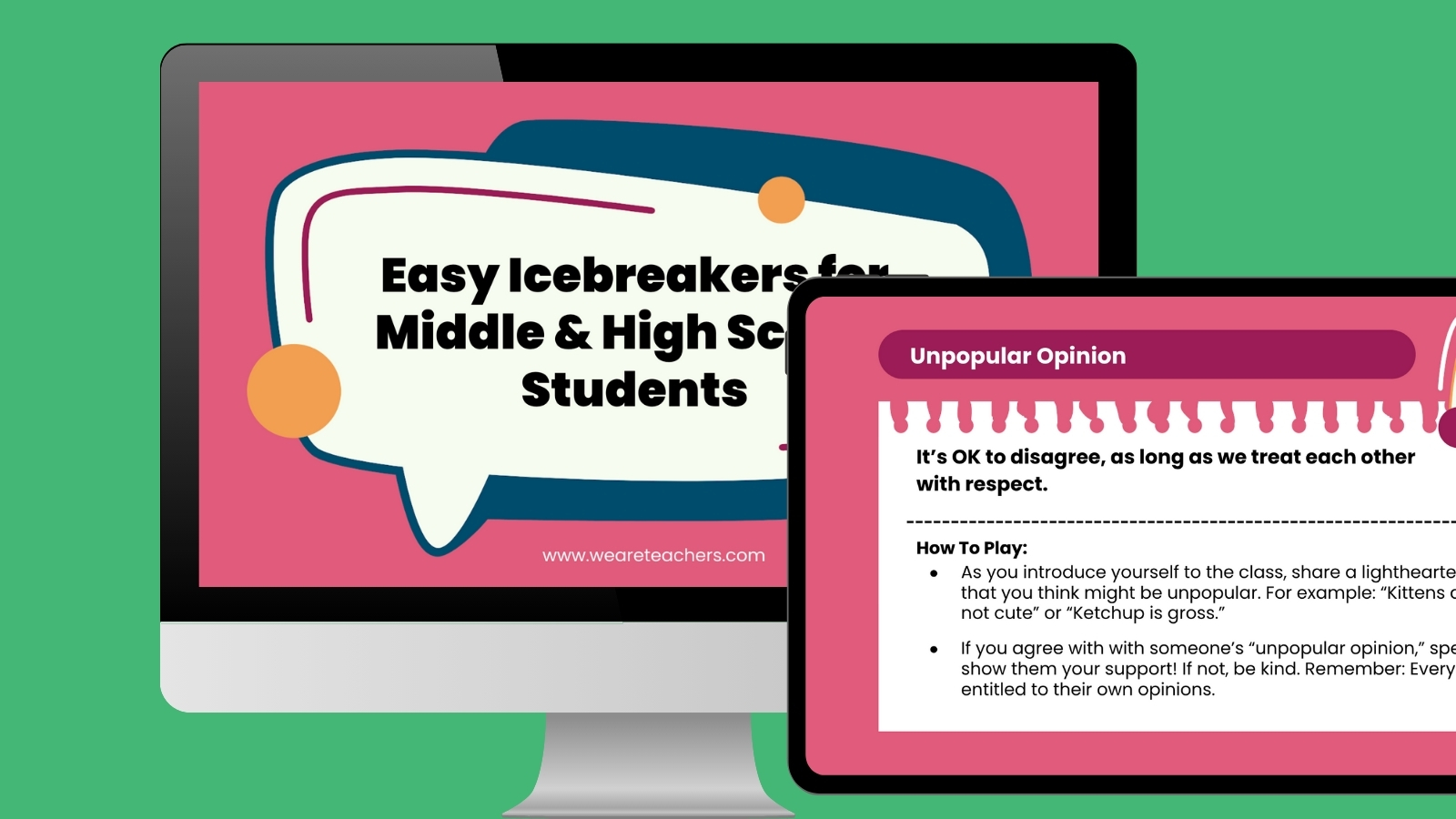Many lecturers love to make use of icebreakers on the primary day of faculty. However discovering icebreakers for highschool college students generally is a actual problem. Older youngsters can see the same old “attending to know you” actions coming from a mile away—they usually don’t need to danger trying foolish or awkward in entrance of their friends. The bottom line is to make them overlook themselves quickly as a result of they’re so wrapped up within the sport. That’s the place this checklist of actions is available in. (Tip: Most of them make terrific icebreakers for center schoolers too!)
Bounce to:
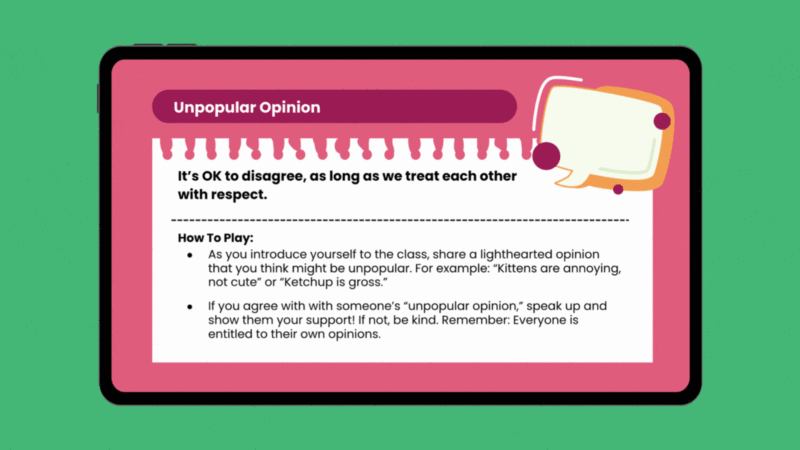
FREE GOOGLE SLIDES
Center and Excessive Faculty Icebreakers
Seize our free Google Slides with the entire icebreakers beneath to share along with your class!
What are the advantages of utilizing icebreakers with highschool college students?
By highschool, lots of your college students have most likely recognized one another for years. However as a trainer, this might be your first time assembly them. Spending a while attending to know them on a extra private degree may help you forge beneficial connections proper from the beginning.
Icebreakers may also assist set the tone in your class and instructing type. If you need youngsters to loosen up in your classroom and really feel snug collaborating, the appropriate icebreaker can set the stage for these expectations. While you’re fascinated by constructing a robust sense of classroom group, a first-day team-building exercise units issues off on the appropriate foot.
You may even use icebreakers to create or reinforce classroom guidelines and expectations, or introduce your curriculum for the yr. They’re much more enjoyable than merely studying the principles or reviewing a syllabus handout, they usually encourage a optimistic classroom tradition.
Irrespective of why you’re utilizing icebreakers along with your class, you’re positive to seek out some fascinating new actions on our checklist!
Getting To Know You Icebreakers for Center and Excessive Faculty College students
Right here’s a tip: Earlier than you ask youngsters to inform you about themselves, make sure you introduce your self first! We’ve bought an incredible checklist of how to introduce your self to college students right here, and plenty of these could be flipped in your college students to make use of too.
Now you’re able to ask youngsters to disclose a bit about themselves. This is a chance to seek out methods to attach with them within the months forward and for them to seek out new pals too. Listed here are some center and highschool icebreakers that actually do assist lecturers and college students get to know each other.
1. Unpopular Opinion
- Time: 15 to twenty minutes
- Supplies: None
- Prep: None
How To Play:
- Present college students one of many viral “unpopular opinion” movies, the place somebody defends a standpoint like, “Kittens and puppies are annoying, not cute” or “Ketchup is gross.” (You’ll want to watch the video first to make sure it’s applicable in your viewers.)
- As college students introduce themselves, ask them to share certainly one of their very own unpopular opinions. They could be shocked to find that a few of their classmates agree!
2. Would You Relatively … ?

- Time: 20+ minutes relying on the variety of situations
- Supplies: Would You Relatively questions
- Prep: Select questions and divide the room into two sections.
How To Play:
- Choose questions which can be a mixture of humorous and getting-to-know you varieties, equivalent to: Would you reasonably do math homework or go for a 2-mile run? Learn a e-book or watch a film? Wrestle a gorilla or swim with alligators?
- Ask the primary query, and assign one aspect of the room to every possibility. Ask college students to maneuver to the aspect that represents their selection, then allow them to chat amongst themselves for a minute or so.
- Repeat as many occasions as you want, giving college students an opportunity to combine and mingle.
3. Classmate Bingo
- Time: 15 to twenty minutes
- Supplies: Icebreaker Bingo Playing cards
- Prep: Copy bingo playing cards (one per pupil) and guarantee every pupil has a pen or pencil.
How To Play:
- Use this free bingo card generator to create your individual Classmate Bingo playing cards.
- Give one to every pupil, then ask them to maneuver across the room, chatting to seek out different college students who can preliminary every area. When you have sufficient college students, make a rule that every pupil can solely preliminary one area on any card.
- Supply small prizes to the primary pupil to fill in a row or the primary to fill their complete card.
4. Blobs and Strains
- Time: 15 to twenty minutes
- Supplies: Checklist of prompts for the “blobs” and “traces”
- Prep: None
How To Play:
- Make a listing of how for college kids to arrange themselves in traces or blobs.
- Strains: So as by peak, birthday, alphabetical by center names, and many others.
- Blobs: Grouped by sort of footwear, hair shade, favourite ice cream taste, and many others.
- Learn out the primary immediate, then step again and let college students line themselves up or group themselves collectively with out assist or interference. Permit them a minute or two to talk in every association.
- Proceed with extra prompts for so long as you want.
5. Pace Conferences
- Time: 15 to twenty minutes
- Supplies: Icebreaker questions
- Prep: Prepare chairs or desks into two concentric circles in order that contributors will face one another in pairs.
How To Play:
- Divide the category in half, and have them sit in two concentric circles going through one another in pairs.
- Ask an icebreaker query, set a timer for 60 seconds, and let every pair focus on.
- When the timer dings, the surface ring strikes one seat to the left. Give the brand new pairs a brand new query, and set the timer once more.
- Proceed till everybody has had an opportunity to talk with everybody else, or so long as time permits.
6. What Do You Meme?
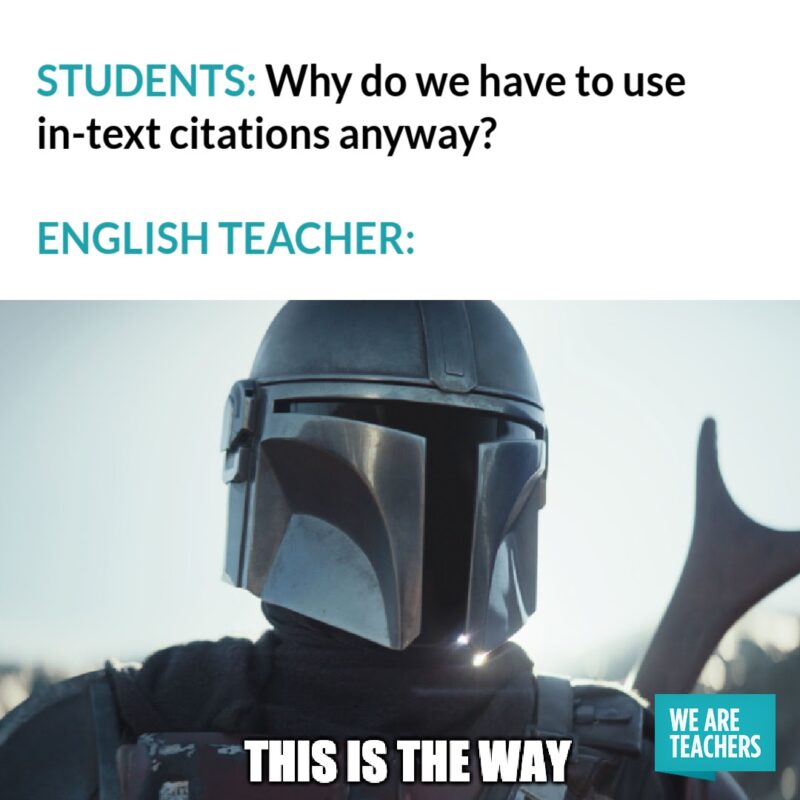
- Time: 5 to 10 minutes
- Supplies: 5 or 6 meme printouts
- Prep: Submit meme printouts in varied locations across the classroom, with area to assemble round every.
How To Play:
- Discover some standard meme pictures on the net, print them out, and put up them in varied locations round your classroom.
- Ask college students to seek out and stand by the meme that greatest represents how they really feel concerning the topic you train.
- Allow them to chat in these teams for a minute or two, then pose a couple of extra icebreaker questions for them to group collectively and focus on.
7. Collaborative Playlist
- Time: 20 to half-hour
- Supplies: A option to play among the songs chosen for the playlist (elective)
- Prep: None
How To Play:
- Ask every pupil to contribute one music option to a category playlist, together with a proof of why they love that music. (Relying on college students’ ages, you may determine on parameters for lyrics and language.)
- Create the checklist on Spotify so all college students can hear to 1 one other’s songs.
- Should you enable music in your classroom, add this playlist to your assortment.
8. Sweet Share
- Time: 15 to twenty minutes
- Supplies: Individually wrapped small candies, like Hershey’s Kisses
- Prep: None
How To Play:
- Cross round a bowl of small sweet like Hershey’s Kisses, and invite every pupil to take as many as they like (guarantee every pupil takes a minimum of one), however don’t eat them but.
- As soon as everybody has a handful of sweet, clarify that for every bit they took, they need to share an fascinating truth about themselves. (Then they will eat the treats!)
9. Two Truths and a Lie
- Time: 15 to twenty minutes
- Supplies: None
- Prep: None
How To Play:
- Ask every pupil to share two information about themselves and one lie, with out figuring out which one is unfaithful.
- Different college students attempt to guess which one is the lie. Children all the time have enjoyable developing with stuff to idiot one another!
10. Humorous Debate
- Time: 15 to twenty minutes
- Supplies: None
- Prep: Select a humorous debate subject for the icebreaker.
How To Play:
- Choose a not-so-serious topic for debate, like what’s the greatest pizza topping or whether or not or not clowns are scary.
- Ask college students to assemble in teams with others who share their opinion, and provides them a minute or two to talk.
- Let the talk start! College students take turns defending their factors of view.
11. Phrase Clouds
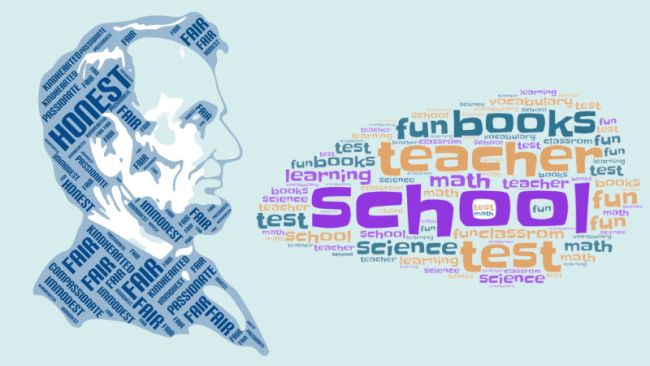
- Time: 30 to 40 minutes
- Supplies: Paper and pencils, or a pc with net entry for every pupil
- Prep: Create a phrase cloud of your individual to share with college students.
How To Play:
- Clarify to college students that the phrases we select to outline ourselves could be actually telling. Present them some phrase clouds and clarify their function and design.
- Ask college students to make a listing of phrases that describe themselves. Circle or spotlight phrases that really feel a very powerful.
- Now, have college students create phrase clouds! They’ll draw them by hand on paper, or attempt certainly one of these free on-line phrase cloud mills as an alternative. Remind them to make the phrases they selected as most essential greater, and encourage them to make use of a form that represents themselves too.
12. Stand Up, Sit Down
- Time: 15 to twenty minutes
- Supplies: Icebreaker questions
- Prep: Select a sequence of icebreaker questions to make use of along with your class.
How To Play:
- Ask an icebreaker query. If college students reply sure, they arise. If no, they sit down (or keep seated).
- Let youngsters go searching to see how others have answered, then transfer on to the following query.
13. Paper Planes
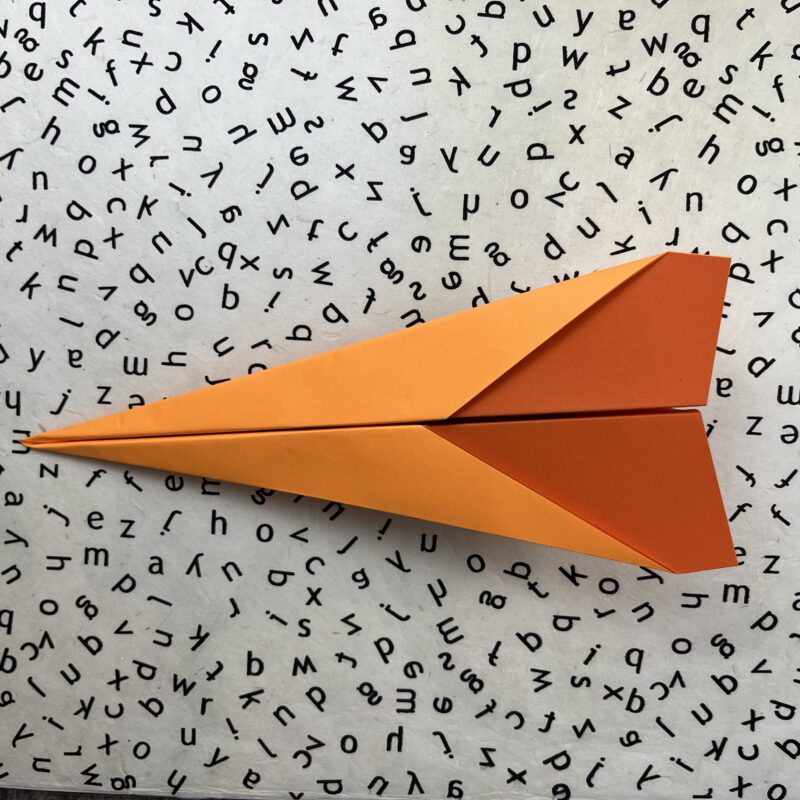
- Time: 30 to 40 minutes
- Supplies: Pencils and paper, one piece for every pupil
- Prep: None
How To Play:
- Ask every pupil to jot down a get-to-know-you query on a chunk of paper. (Encourage them to suppose creatively so that you don’t wind up with the identical query over and over.)
- Then, have them fold the papers into planes and spend a minute throwing them throughout the room. (Listed here are some free printable paper airplane–folding instructions.)
- Everybody picks up a airplane, then takes turns answering the questions they’ve picked up.
14. Widespread Thread
- Time: 20 to half-hour
- Supplies: None
- Prep: None
How To Play:
- Divide college students into teams of 4 and have them sit collectively in these small teams.
- Give every group 5 minutes to talk amongst themselves and discover one thing all of them have in frequent. It may very well be that all of them play soccer, or pizza is their favourite dinner, or they every have a cat. Regardless of the frequent thread, the dialog will assist them get to know each other higher.
- Repeat this exercise in new teams as many occasions as you want.
15. Present-and-Inform
- Time: 30 to 40 minutes
- Supplies: None
- Prep: Contact college students and ask them to deliver an merchandise for Present-and-Inform on the primary day of sophistication. Select an merchandise of your individual to share too.
How To Play:
- Ask college students to deliver one thing for Present-and-Inform on the primary day of sophistication to assist their classmates get to know them a bit higher.
- If college students are unable to deliver the precise merchandise, they will share footage as an alternative. Take into account posting the photographs on a bulletin board with a written rationalization from every pupil so others can have a look once they have time.
16. Seashore Ball Toss
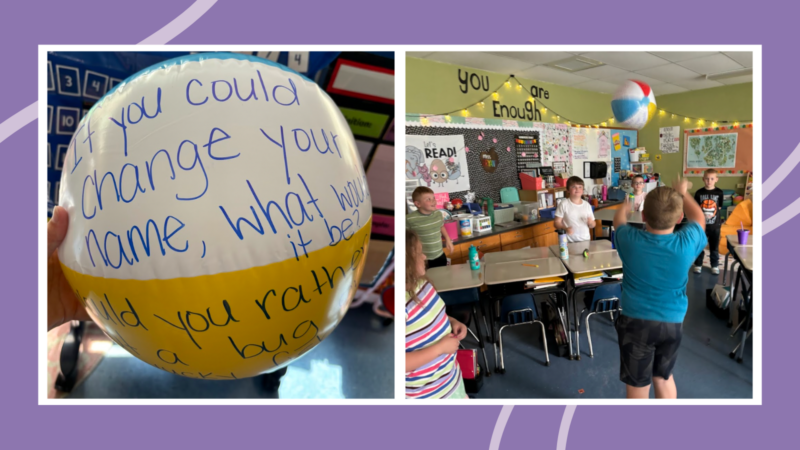
- Time: 15 to twenty minutes
- Supplies: Seashore ball, everlasting marker
- Prep: Select and write icebreaker questions on the seashore ball.
How To Play:
- Begin the sport by tossing the ball to a pupil at random.
- Ask the scholar to take a look at the query their proper thumb landed on, then share their reply with everybody.
- Then, have them toss the ball on to another person. Proceed till everybody has had a flip.
17. Say Howdy!
- Time: 5 to 10 minutes
- Supplies: None
- Prep: None
How To Play:
- Sit in a circle (or in a method that makes it straightforward for everybody to see one another).
- Ask one pupil to face up and say, “Hello, my title is [name].”
- The entire class responds, “Howdy, [name]!”
- They sit down, and the following individual does the identical. This can be a terrific option to be taught names, and it offers youngsters an opportunity to assist others be taught to pronounce theirs if it’s a bit tough.
18. Favourite Quote

- Time: 30 to 40 minutes
- Supplies: Paper and markers; lists of quotations or a pc with net entry for every pupil
- Prep: Select a citation of your individual to share with the category.
How To Play:
- Ask college students to decide on their favourite inspirational quote. Give them a bit time to do some net analysis or use our monumental assortment of quotes to get began.
- Then, have them write their chosen quote on a chunk of paper with colourful markers, adorning it nonetheless they like.
- Let every pupil share their quote and clarify why they prefer it.
- Use the quotes to brighten your classroom partitions or faculty hallways.
19. Sweet Colours
- Time: 15 to twenty minutes
- Supplies: Wrapped candies in several colours (we like Starburst or Life Savers)
- Prep: Select one icebreaker query for every shade. (For example: Pink—share the perfect meal you’ve ever eaten; inexperienced—inform us your favourite joke.)
How To Play:
- Cross round a bowl of wrapped sweet that is available in totally different colours, and ask each pupil to decide on only one however not eat it but.
- After everybody has theirs, inform them they every should reply an icebreaker query primarily based on the colour they picked. You’ll want to disguise the questions till everybody has their sweet in hand!
20. Discover Me
- Time: 20 to half-hour
- Supplies: Observe playing cards and pencils (one per pupil)
- Prep: None
How To Play:
- Ask every pupil to jot down a singular truth about themselves on a observe card.
- Collect and blend up the playing cards, then go them again out randomly.
- Have college students mingle and chat, looking for the one who matches the cardboard they’re holding.
- Repeat this over and over so everybody has an opportunity to fulfill up and chat.
21. Fakebook Web page
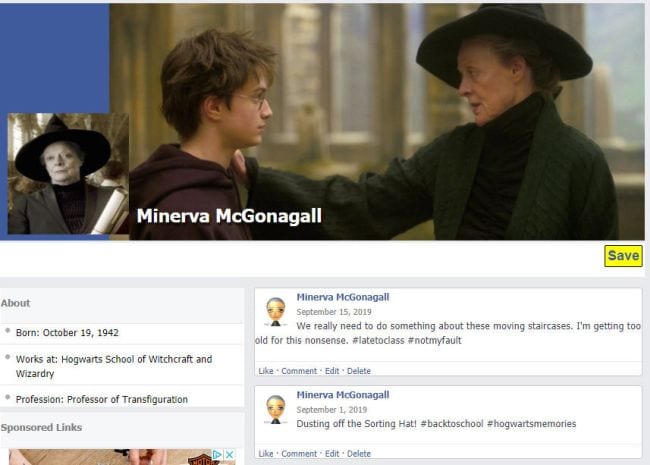
- Time: 30 to 40 minutes
- Supplies: Laptop with net entry for every pupil
- Prep: Create your individual Fakebook web page.
How To Play:
- Give college students the hyperlink to this classroom-safe free on-line Fakebook generator,
- Ask them to personalize their very own web page nonetheless they like, then take turns sharing the consequence with the category. (This additionally offers you an excellent alternative for a lesson on accountable digital citizenship.)
Setting Classroom Expectations Icebreakers for Center and Excessive Faculty College students
Many lecturers begin the primary day of faculty by sharing their classroom guidelines, assigning seats, and introducing the yr’s agenda. Now, let’s be sincere: Most children tune out while you begin sharing your guidelines. They’ve heard all of them earlier than, proper? So, attempt giving your college students some possession over the expectations in your classroom. You’ll be shocked at how this generally is a actual game-changer.
22. Seating Plan Spin
- Time: 20 to half-hour
- Supplies: None
- Prep: Arrange desks within the seating association of your selection.
How To Play:
- Inform college students that they’ll be creating the preliminary seating chart in your class. The one rule? They’ll’t decide “sit wherever we would like.”
- Allow them to brainstorm concepts in small teams, then checklist all their concepts on the board for the entire class to see. (They could counsel choices like “alphabetical by center names,” “grouped by birthday month,” and so forth.)
- Maintain a vote to decide on the winner. (You may veto any ideas you dislike first.)
- Lastly, let college students determine how one can get themselves into the appropriate seats utilizing the principles they selected, and create your seating chart.
23. Proper or Fallacious Skits
- Time: 45+ minutes
- Supplies: Paper and pencils (elective)
- Prep: Create your classroom guidelines and expectations.
How To Play:
- First, share your classroom guidelines and expectations.
- Divide youngsters into small teams, one for every rule. The group has 10 minutes to arrange brief skits exhibiting the appropriate option to observe the rule and the unsuitable form of conduct.
- Carry out the skits for the category, group by group. Children actually have enjoyable hamming up the unsuitable behaviors, they usually’re all more likely to recollect your guidelines.
24. Classroom Structure
- Time: 1 to 2 hours
- Supplies: Paper and pencils
- Prep: None
How To Play:
- Inform your college students that by center faculty and highschool, you realize they typically perceive the principles they should observe. So, they’re going to work collectively to attract up a Classroom Structure you may all agree on.
- Brainstorm expectations for an excellent classroom, then create the rules they’ll have to observe to make that occur.
- Craft the language and have everybody signal.
Observe: This can be a mission that may take greater than someday, nevertheless it’s particularly enjoyable in social research, historical past, and authorities lessons. Get a free on-line lesson to stroll you thru the method right here.
25. Shared Objectives
- Time: 30 to 45 minutes
- Supplies: Chart paper and pencils or markers
- Prep: Choose your questions, then write one on every bit of chart paper. Submit the chart papers in varied areas across the room.
How To Play:
- Inform college students that you just need to discover out what they actually need to know and study in your class this yr.
- Submit a couple of anchor charts across the room with one query on every, like these:
- What do you suppose you’ll be taught on this class this yr?
- What do you actually need to be taught on this class this yr?
- How can your trainer enable you be taught and succeed?
- What are you most trying ahead to on this class?
- What do you dread most about this class?
- Have youngsters flow into and write their solutions on the charts.
- Look every one over as a category and speak concerning the responses. Clarify whether or not this class will meet their expectations, and if not, why not.
26. Blind Kahoot
- Time: 15 to twenty minutes
- Supplies: Units for college kids to answer Kahoot questions
- Prep: Create a Kahoot quiz with questions that college students will be capable of reply by the tip of the yr however are unlikely to know now. The questions ought to cowl the highlights of your course. Watch the video above for extra info.
How To Play:
- Create (or discover) a Kahoot that covers the essential fundamentals of your syllabus.
- Begin with this quiz on the primary day, explaining that you just don’t count on them to know the solutions but. (Children will seemingly moan and groan over every query, nevertheless it gives you an opportunity to be taught what they already know, and assist them uncover what’s coming within the semesters forward.)
27. Scholar Expectations
- Time: 15 to twenty minutes
- Supplies: None
- Prep: None
How To Play:
- Inform college students you’ll be asking them to share:
- Their title
- Their expectations of the category
- Their thought about the very best final result if their expectations are met
- Give them a few minutes to consider and jot down their solutions.
- Ask every pupil to share. (An instance could be “Hello, my title is Harper. I’m anticipating to be taught concerning the historical past of our nation. My wildest expectation is that if I be taught sufficient, I’ll be capable of perceive extra about why we’ve such bother agreeing politically.”)
28. Guidelines Snowball Battle
- Time: 15 to twenty minutes
- Supplies: Paper and pencils
- Prep: Put together your classroom guidelines and expectations.
How To Play:
- Introduce your classroom guidelines and expectations.
- Hand out clean items of paper to your college students. Ask them to jot down down the rule they suppose is a very powerful.
- Now for the enjoyable half: Have them crumple up the papers and throw them across the room (gently!) for 1 to 2 minutes.
- Have every pupil seize the paper nearest them. Learn the rule aloud and preserve monitor of what number of occasions every one was chosen as most essential.
- Afterwards, assessment the outcomes and have a category dialog about what these outcomes say about their very own values and expectations.
Group-Constructing Icebreakers for Center and Excessive Faculty College students
Group-building actions could be plenty of enjoyable, although you’ve bought to select them fastidiously, particularly with this age group. You’ll want to debrief while you’re achieved—ask college students to consider why you had them do that exercise and what they discovered from it. And for those who’re selecting one thing bodily, do not forget that not everybody within the class could give you the chance (or prepared) to take part, so take into consideration the way you’ll deal with that prematurely. Discover a checklist of our favourite team-building video games and actions right here, that are nice to make use of for highschool and center faculty icebreakers, or attempt among the following concepts.
29. Tarp Flip Problem
- Time: 15 to twenty minutes
- Supplies: Giant tarps
- Prep: Unfold tarps on the ground across the room.
How To Play:
- Unfold a number of tarps on the ground.
- Divide college students into teams. Every group stands collectively on one tarp.
- Now, the problem: They need to flip the tarp utterly over with out stepping off of it onto the ground!
- In any case college students have completed (or when time is up), speak about their experiences and what they discovered about one another—and dealing in groups.
30. Scavenger Hunt
- Time: 30 to 45 minutes
- Supplies: Scavenger hunt handouts
- Prep: Create a listing of things for college kids to seek out within the scavenger hunt. There are such a lot of methods to make use of scavenger hunts as highschool and center faculty icebreakers. Is that this a brand new faculty in your college students? Ship them out to discover it. Wish to present them round your classroom? Arrange a hunt for various areas and assets. Simply need a enjoyable likelihood to get to know them? Do a hunt to see which group can produce varied gadgets (purple pen, hair scrunchie, breath mint, and many others.) from their baggage or pockets the quickest. The purpose is to get youngsters working collectively in teams and having a bit enjoyable. (Seize our free assortment of printable scavenger hunts right here.)
How To Play:
- Divide college students into pairs or teams. Give every a duplicate of the scavenger hunt.
- Present time for college kids to finish the hunt (or collect as many gadgets as doable).
- Award small prizes for achievements. Debrief by discussing which gadgets or challenges had been essentially the most tough and why.
31. Classroom Escape Room
How To Play:
- Select or create an escape room that helps introduce college students to your classroom or the topic you train.
- Encourage college students to work collectively to finish the challenges and “escape.”
- Afterwards, speak about their expertise. What did they study your classroom or topic? What did they study one another? How did they work collectively to beat difficulties?
32. STEM Problem
How To Play:
- Divide college students into teams or pairs. Distribute provides and clarify the problem.
- Encourage college students to work collectively to perform their aim.
- Afterwards, speak about their expertise. What was essentially the most tough? How did they work collectively to beat difficulties? What did they study one another?
33. Good Sq.
- Time: 15 to twenty minutes
- Supplies: Piece of rope (size could differ primarily based on the quantity of area accessible); blindfolds for every participant
- Prep: Clear an area for the exercise.
How To Play:
- Break college students into teams of 4. (Children must be blindfolded, so it’s possible you’ll need to enable some college students to decide out and be observers as an alternative.)
- Blindfold every pupil, then hand one in every group the bundle of rope.
- Clarify that their aim is to work collectively to type an ideal sq. with their ropes whereas blindfolded, and lay it on the bottom in entrance of them.
- Take away the blindfolds and have a look at the outcomes. Ask the group who made the perfect sq. to clarify their technique. Let different teams share about their very own experiences.
- This exercise requires sturdy verbal communication and cooperation. It’s tougher than it sounds, but when youngsters grasp it too rapidly, ask them to attempt a tougher form, like a circle or a hexagon.
34. Classification Problem
- Time: 30 to 45 minutes
- Supplies: A group of 20 small gadgets; pencils and paper for every group
- Prep: Put together a tray (or an image collage) with 20 unrelated gadgets—as an illustration, a spool of thread, an eraser, a juice field, and many others.
How To Play:
- Divide your class into teams and provides them pencils and paper.
- Present the category the tray. Problem every group to work collectively to place the 20 gadgets into 4 classes that make sense to them. (For instance, they might put an earring, a glove, a headset, a sock, and a smile into the class “belongings you put on.”)
- Have teams work quietly in order that their concepts are stored secret.
- When every group is completed, give every one time to current their classes and their rationale behind every class.
35. Comply with the Chief
- Time: 5 to 10 minutes (or longer)
- Supplies: None
- Prep: None
How To Play:
- Ask for a volunteer guesser and have them go away the room.
- Whereas they’re gone, select a frontrunner and have the group stand in a circle.
- The chief begins a motion, which the remainder of the group should mimic. (For example, the chief may soar up and down or wave their arms over their head.)
- Invite the guesser again in to face in the midst of the circle because the actions proceed.
- Every now and then, the chief adjustments the motion, and the remainder of the group follows.
- The guesser should attempt to decide who the chief is by watching the group’s actions carefully.
- As soon as they guess proper, the spherical ends, and the previous chief turns into the brand new guesser. Repeat for so long as you want.
36. Recreation Day
- Time: 30 to 45 minutes
- Supplies: Board video games of your selection
- Prep: Arrange desks as wanted for gameplay.
How To Play:
It’s as much as you! Attempt cooperative social gathering video games like Codenames, Herd Mentality, Pictionary, or Decrypto. Or arrange a wide range of board video games at stations across the room, and let college students select the one they like greatest. Discover a lot of terrific classroom video games right here.
37. Balloon Tower
- Time: 20 to half-hour
- Supplies: Balloons and masking tape
- Prep: None
How To Play:
- First break your class into small teams of 4 to 6 college students. Provide every group half a dozen balloons in a wide range of dimensions and shapes and a roll of masking tape.
- The aim is to construct the very best tower doable utilizing solely these two provides. Give every group 5 minutes to brainstorm methods earlier than they really begin constructing.
- Lastly, begin the builds! Set a time restrict of 5 to 10 minutes, then get out the measuring tapes to declare the winner.
- Afterwards, focus on which methods labored and which didn’t, in addition to every group’s expertise working as a workforce.
38. “No Fingers” Cup Stacking
- Time: 15 to twenty minutes
- Supplies: Plastic cups, rubber bands, string
- Prep: Minimize 4 items of string about 18 inches lengthy. Tie the tip of every piece to a rubber band, equally spaced across the band. Put together one string-and-rubber-band combo for every group. Divide plastic cups into units of six, one set per group.
How To Play:
- Divide college students into teams of 4, and provides every a set of cups and a string-and-rubber-band combo. Make sure every workforce has a flat floor to work on.
- Begin with the cups in a single stack. Groups should work collectively, utilizing the strings to tug the rubber band round every cup, lifting it off after which utilizing it to construct a pyramid (three within the backside row, two on prime, and one on the very prime).
- First group to complete wins. If you wish to improve the problem, inform groups they’re not allowed to speak whereas they work!
39. Password
- Time: 15 to twenty minutes
- Supplies: Whiteboard and marker, timer
- Prep: Select a listing of secret “passwords” for the sport.
How To Play:
- Select one pupil to take a seat with their again to the whiteboard whereas the opposite college students sit going through them.
- Write the key “password” on the board, and set a timer for 60 seconds.
- The category should determine how one can get the guesses to say the phrase written on the board, with out utilizing it immediately. (Make this much more difficult by telling them they will’t speak in any respect.)
- You may break up the category into two groups and take turns, protecting rating. Or simply play for enjoyable!
40. Emoji Charades
- Time: 15 to twenty minutes
- Supplies: Emoji playing cards
- Prep: Print a wide range of emojis, then lower them out and paste them onto observe playing cards. Combine up the playing cards and place them face-down in a pile.
How To Play:
- Divide the category into two groups.
- One pupil from the primary workforce involves the entrance of the room and attracts a card. Then they attempt to act out the emoji for different college students to guess.
- Give the workforce one to 2 minutes to guess. In the event that they get it proper, they get some extent.
- If they will’t get it, the opposite workforce will get one guess to steal the purpose.
- The opposite workforce takes a flip with a brand new card. Repeat so long as you want!
41. Human Knot
- Time: 15 to twenty minutes
- Supplies: None
- Prep: None
How To Play:
- College students stand shut collectively and put their fingers within the center, every grabbing two different fingers at random and creating a large “knot.”
- With out letting go, college students should slowly untangle the knot till they’re standing in a circle. (It’s OK if some persons are going through ahead and a few are backward.) It looks as if an not possible problem, however it may be achieved!
42. Silent Lineup
- Time: 15 to twenty minutes
- Supplies: None
- Prep: Create a listing of how for college kids to line up (peak, birthday order, and many others.)
How To Play:
- Name out one of many prompts in your checklist. College students should determine how one can line up correctly with out speaking in any respect.
- Tip: Begin out straightforward by asking them to line up by peak. Transfer on to a tougher process, like lining up so as of birthdays (January at one finish, December on the different).
- Attempt another prompts you want! Afterwards, debrief by speaking concerning the challenges of speaking while you’re not allowed to speak.
Get your free center and highschool icebreakers Google Slides!
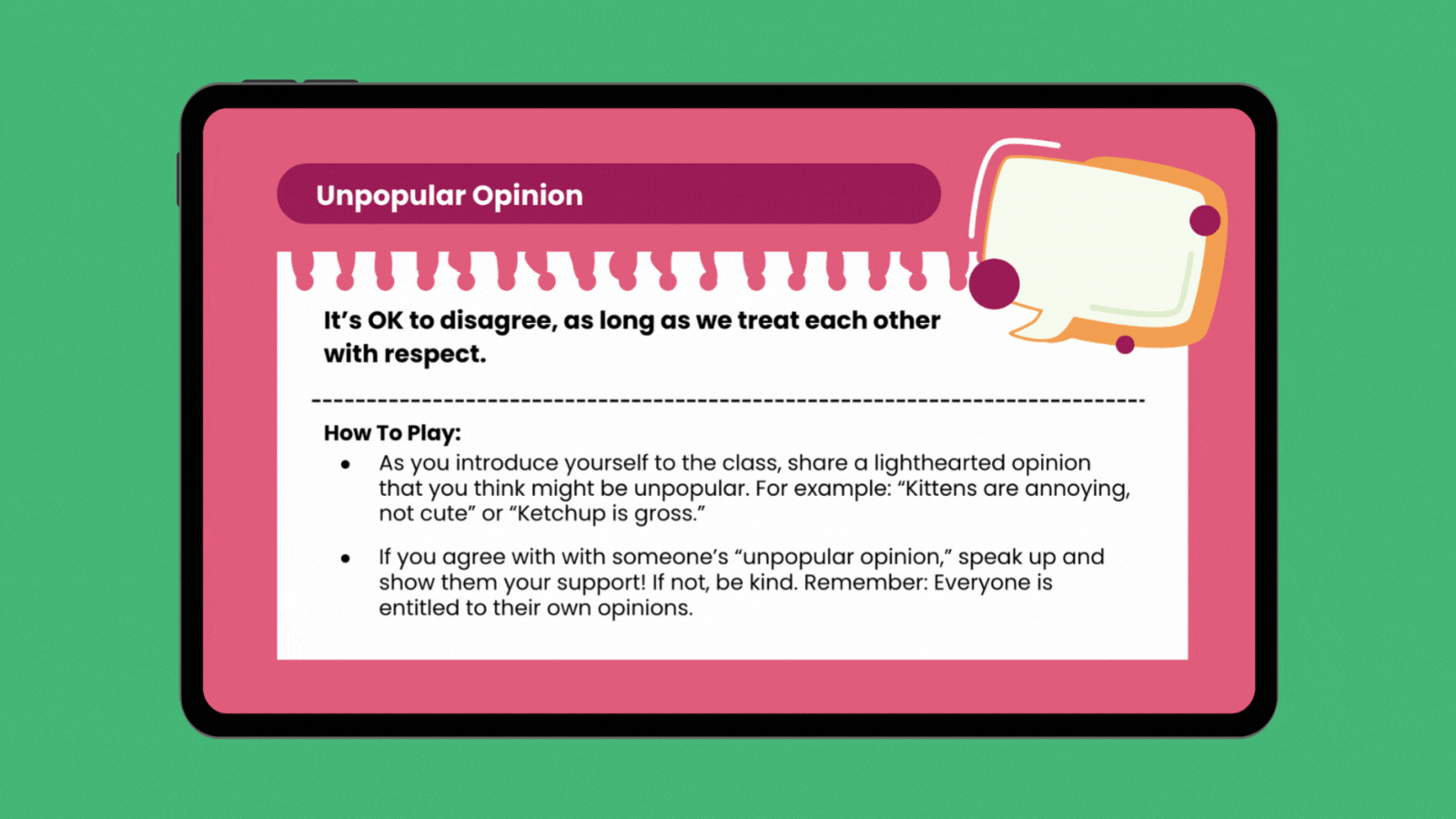
Should you cherished these icebreakers, seize our free printable Google Slides that embrace all of them.
